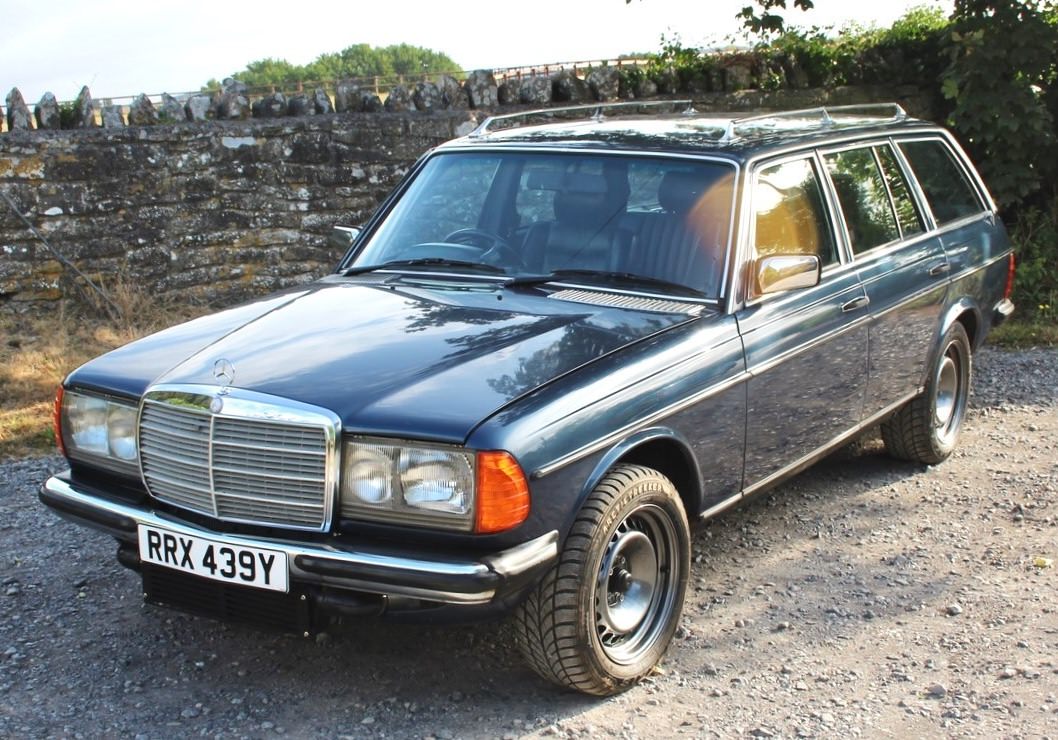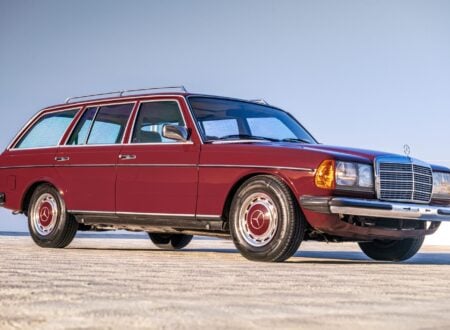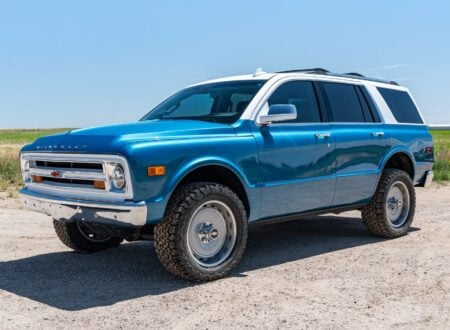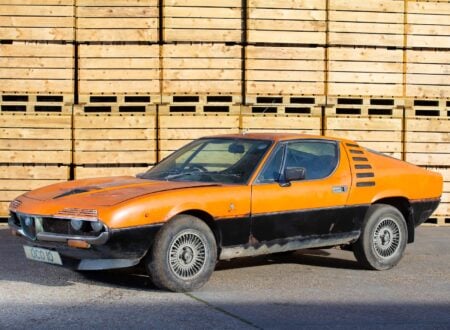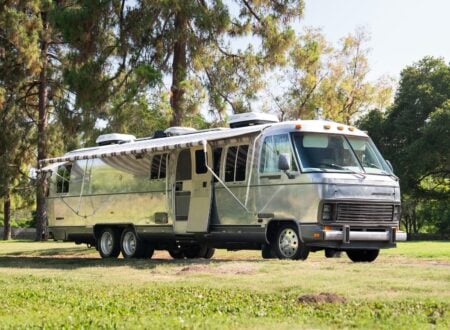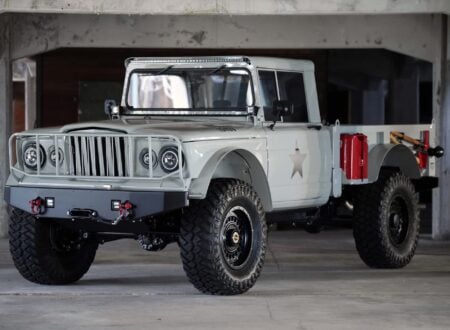This is a 1982 Mercedes-Benz TE that has received a full rebuild into a genuine street sleeper. It’s now powered by a turbocharged 300 bhp Mercedes-Benz OM 606 TD engine, mated to a 6-speed manual gearbox.
To better handle its newfound power, it also has upgraded brakes, and new springs, shock absorbers, and bushes all around. The vehicle also has new floors and sills, upgraded soundproofing, and two-pack stone chip paint on the underside.
Fast Facts: A 300 BHP 1982 Mercedes-Benz W123
- This 1982 Mercedes-Benz 280TE has been transformed into a high-performance street sleeper. It’s now powered by a turbocharged OM 606 TD diesel engine producing 300 bhp, paired with a 6-speed manual gearbox. The conversion includes upgraded suspension, braking, and underbody protection, while preserving the classic W123 estate looks.
- The W123 series was introduced in 1976 as the successor to the W114/W115. Designed by Friedrich Geiger and Bruno Sacco, it was developed to offer a balance between longevity, comfort, and a sort of understated, elegant styling. Nearly 2.7 million examples were produced across sedan, coupe, limousine, and estate variants by the end of its run in 1986.
- Engine choices for the W123 ranged from modest four-cylinder petrol units to more powerful six-cylinder fuel-injected options. Diesel options were highly regarded for their reliability, with the OM617 five-cylinder achieving cult status. A turbocharged 300TD wagon was added for the US market in 1981.
- The restored W123 shown here has Nordic Blue paint, a dark blue leather interior, a Speedhut GPS speedometer, an upgraded fuel system, and custom banded steel wheels. Offered by Dore & Rees on August 2, it carries an estimate of £20,000 – £25,000 ($25,800 – $32,250 USD).
History Speedrun: The Mercedes-Benz W123
The Mercedes-Benz W123 was introduced in 1975 as the successor to the popular W114/W115 series. It became one of the most successful models in Mercedes-Benz history, with nearly 2.7 million examples made between 1975 and 1986. Designed to offer a balance of over-engineered durability, understated styling, and comfort, the W123 quickly became a benchmark for executive sedans and taxis across Europe, the USA, Africa, and the Middle East.


Development work on the W123 began in the early 1970s. The design team, led by Friedrich Geiger and Bruno Sacco, focussed on evolutionary styling changes rather than a radical rethink. The car borrowed a number of mechanical assemblies from the outgoing W114/W115 models, but introduced a slew of improvements, including better passive safety features like crumple zones and a more rigid passenger cell.
The W123 was larger than its predecessor, with more interior space and a wider track. From launch in 1975, Mercedes offered the sedan (Saloon) model, followed by the coupe (C123) in 1977, and the long-wheelbase limousine (V123) later that same year. In 1978, Mercedes introduced the estate (S123 – station wagon) variant, the first official factory station wagon from the marque.
The W123 came in a wide range of versions and trim levels – petrol engine options ranged from four-cylinder carbureted units in the 200 and 230 models to six-cylinder variants like the fuel-injected 280E.
Diesel engines, a popular choice for efficiency especially in export markets like the United States and Africa, included the 200D, 220D, 240D, and 300D. The five-cylinder OM617 engine in the 300D became renowned for its longevity, with some reportedly exceeding a million miles with just regular servicing.
Transmission options included 4 and 5-speed manuals, as well as a later 4-speed automatic. Mercedes also offered a range of luxury and utilitarian trim levels to suit different market sectors – from basic taxi-spec models to well-equipped private luxury vehicles with options like leather upholstery, air conditioning, sunroofs, and high-end Becker radios.
One of the more niche offerings was the 300TD Turbo diesel wagon, introduced for the North American market in 1981. It became a cult favorite for its combination of cargo space, toughness, and reliability. Mercedes also produced limited numbers of specialized versions, including ambulances, hearses, and even a small number of military variants.
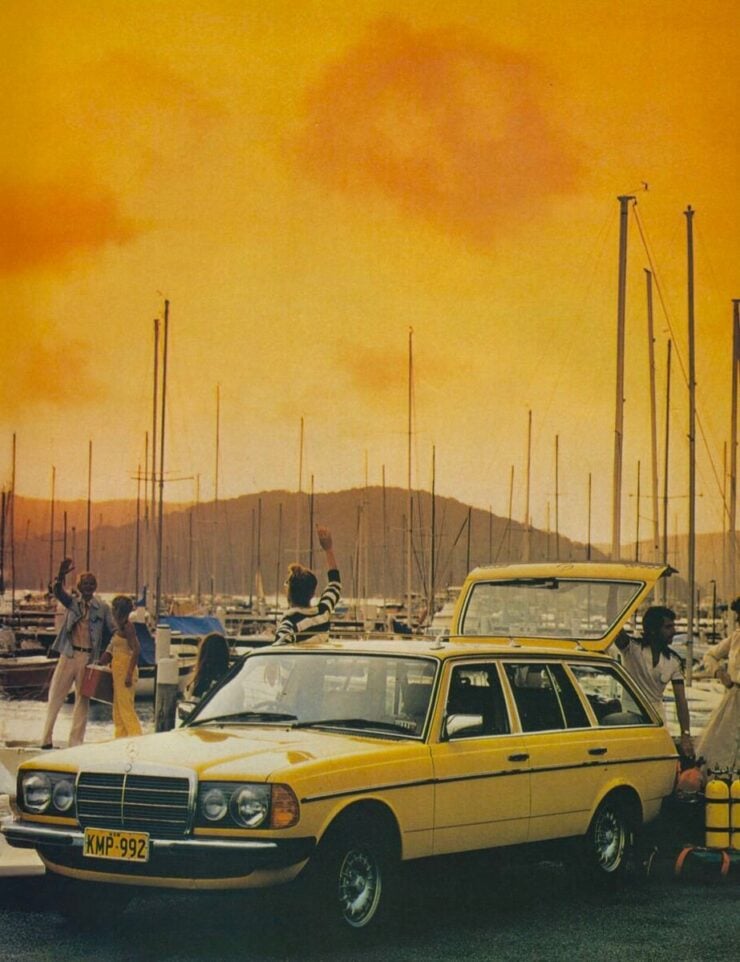

Production started in 1975, and the W123 proved immediately popular. By the time production ended in January 1986, Mercedes had built 2,696,915 examples in total – this figure includes 2.4 million sedans, over 200,000 wagons, 99,884 coupes, and more than 13,700 long-wheelbase versions.
Demand was so high in the late 1970s that used W123s were often sold at a premium above new prices due to long factory wait times that could extend past the 12 mark month for some buyers.
The W123’s good reputation has given it a lasting legacy – other Mercedes from the era, like the R107, W116, W100, and even the T2 “Düsseldorf Transporter,” became known for their rock solid build quality and excellent reliability.
The W123 was replaced by the W124 in late 1984 (with some overlap in production until early 1986). Many W123s remain on the road decades later, particularly in developing countries, where they remain prized by locals for their ease of repair and reliability.
The 300 BHP 1982 Mercedes-Benz W123 Shown Here
The vehicle you see here started out as a 1982 Mercedes-Benz 280TE powered by the 2.8 liter Mercedes M110 engine producing 154 bhp at 5,500 rpm. It underwent a full rebuild, and is now powered by a modified 300 bhp Mercedes-Benz OM 606 TD turbodiesel engine mated to a 6-speed manual transmission.
During the rebuild the car was given new floors and sills, upgraded soundproofing, and two-pack stone chip paint on the underside to protect from rust in the future. It also has a Mercedes 500SL rear axle with a high ratio differential, it’s geared for a top speed of 140 mph, with 70 mph at a leisurely 2,000 rpm.
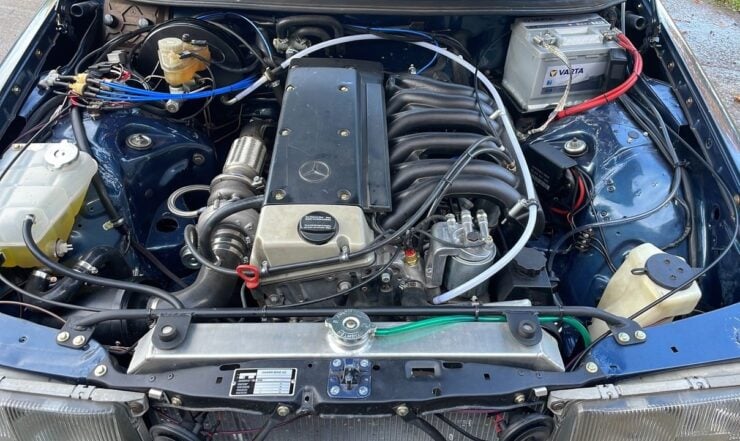

It has new Nordic Blue metallic paintwork over a dark blue leather interior, as well as banded steel rims with Maxxis tires, and a new headlining on the interior. A replacement fuel tank has been fitted, as well as new fuel lines, the original speedometer is still fitted, but it also now has a Speedhut GPS unit and a Sony double DIN Bluetooth Apple Play stereo.
It’s due to roll across the auction block with Dore & Rees on the 2nd of August with a price guide of £20,000 – £25,000 or $25,800 – $32,250 USD. If you’d like to read more about it or place a bid you can visit the listing here.
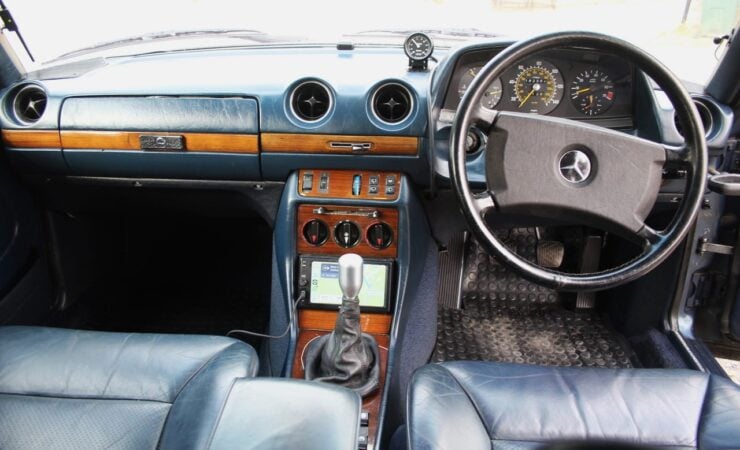
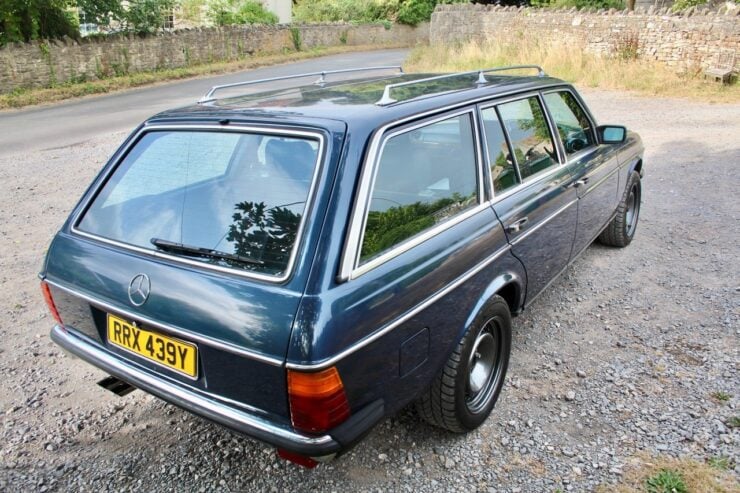
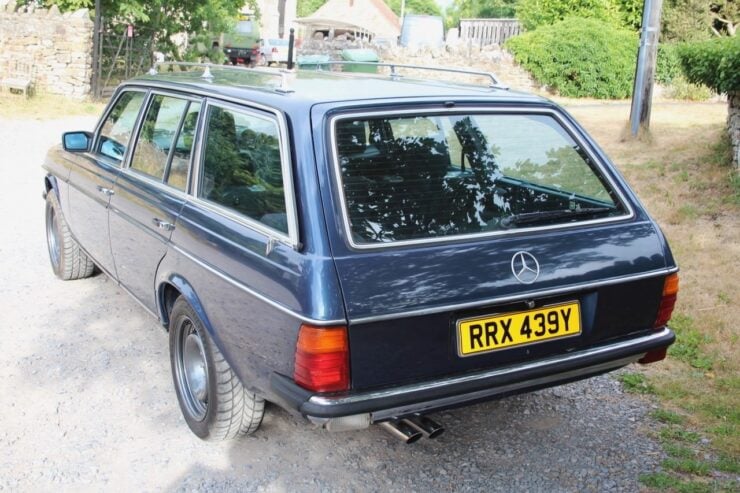
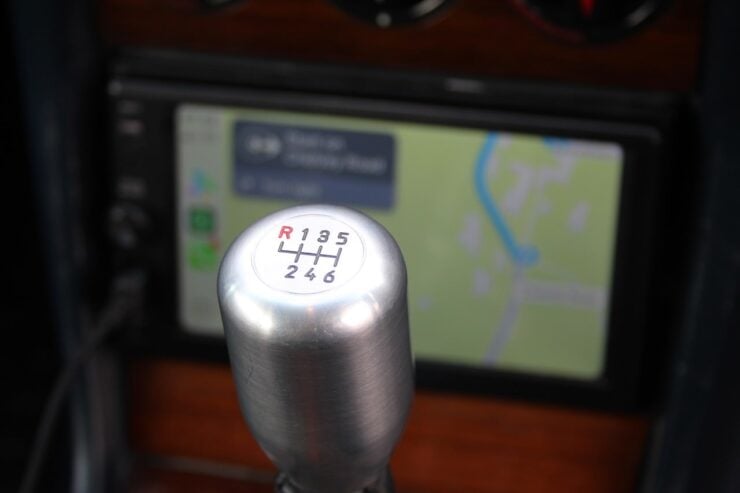
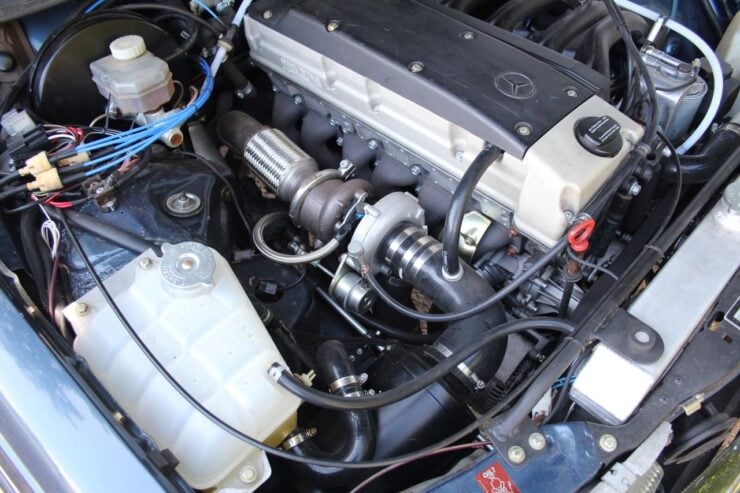


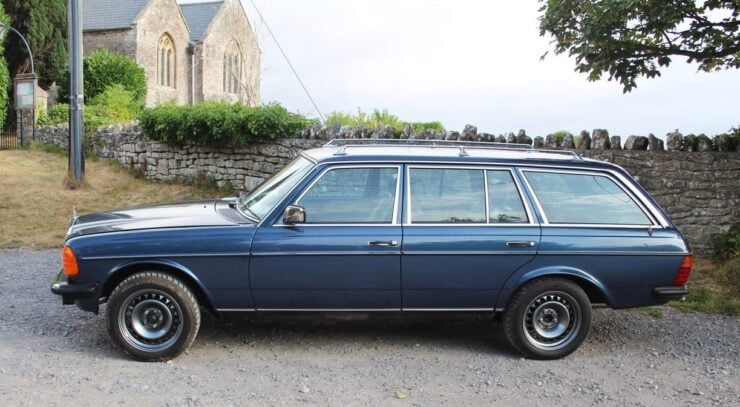
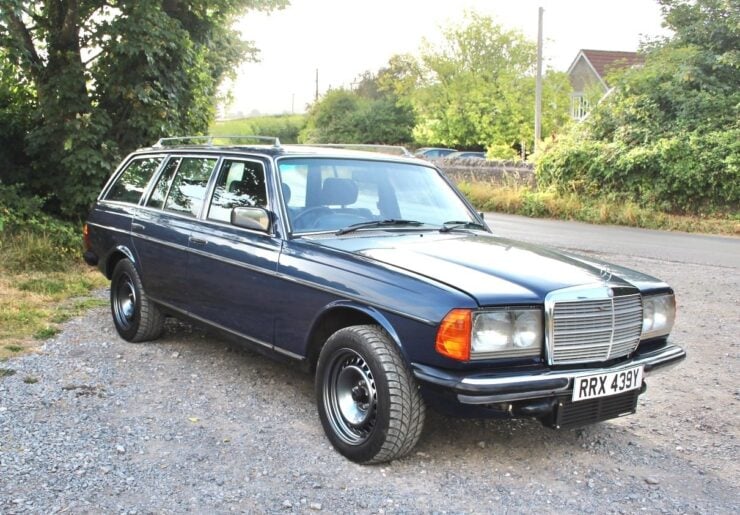
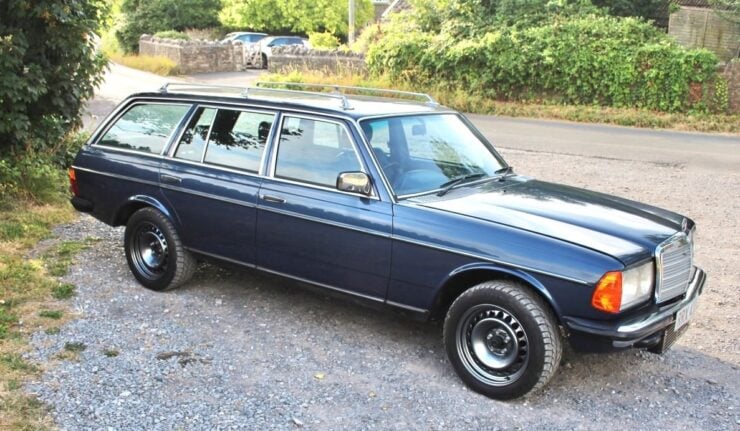
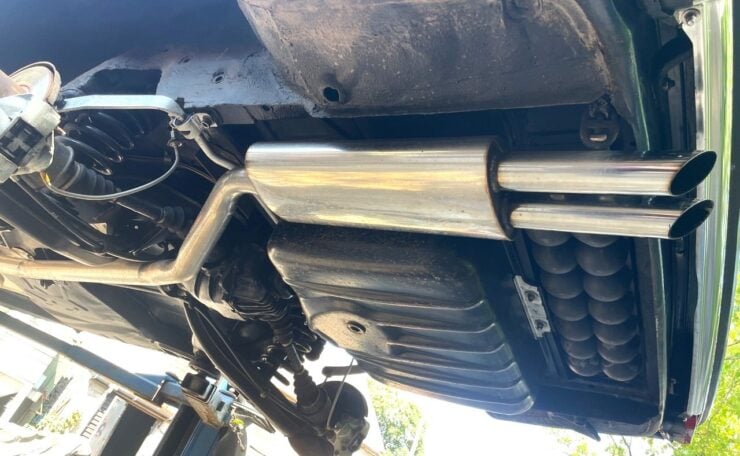

Images courtesy of Dore & Rees

